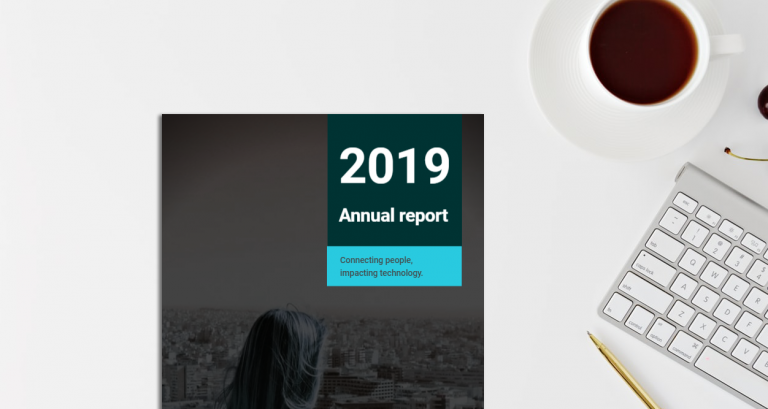Ageism in tech
Landing your dream job in Silicon Valley, Silicon Fen or any of the major tech hubs takes more than having attended a brand-name business school or a CV with a dazzling array of qualifications, ex-curricula or otherwise, it takes determination.
Especially so if you were born before the original ‘Winter of Discontent’.
Most believe the tech sector is dominated by youthful workers, but is it really, and if so what impact will there be by recruiting those with less tenure in the workplace than time spent at college?
Could this affect the ability of tech companies to develop properly and ultimately compete on the world stage?
The UK’s tech sector is currently expanding at two-and-a-half times faster than the rest of the economy, with revenues rising from £170bn in 2016 to £184bn in 2018.
While much progress has been made in terms of improving gender inclusion within the sector, with one in four (23.4%) roles now held by women (a rise from 18% in 2010), age is a determinant which still commonly runs under the radar in diversity initiatives.
Research from PayScale showed that the median age of a Facebook worker in 2016 was 29. At Google, it was 30 and at Apple, the figure stands at 31 years.
While age discrimination exists in a number of industries, the tech sector is seemingly overt in its preference for younger candidates – certainly not for cost benefits, as the most sought after talent necessarily attract significant salaries and a pile of stock, up to and including senior management.
In other sectors, executive positions would typically be occupied by candidates with more experience. Yet tech giants and innovative start-ups tend to focus on finding and developing talent in their twenties or thirties. This is great news for those in the early stages of their careers, but for candidates who don’t make it into this tight age bracket it is an altogether different story.
Sitting at the epicentre of innovation, tech firms typically see young people as the future and are unabashed about promoting demographic discrimination. Some tech firms restrict applications to ‘digital natives’ in their job ads to actively discourage older candidates.
With the average age of the UK population exceeding 40 for the first time since 2014, and the UK pensionable age set to rise to 66 by 2020 and 67 by 2028, the talent pool is brimming with well-seasoned candidates who are motivated and eager to contribute their expertise to the modern tech landscape.
This pervasive culture of age discrimination within the tech industry is not only damaging to businesses themselves, it’s simply unrealistic.
With the average age of the UK population exceeding 40 for the first time since 2014, and the UK pensionable age set to rise to 66 by 2020 and 67 by 2028, the talent pool is brimming with well-seasoned candidates who are motivated and eager to contribute their expertise to the modern tech landscape.
Considering the young age of the employers themselves, it doesn’t take an expert to see the clear role unconscious bias plays in the decisions of hiring managers and business leaders in the tech sector.
Having been raised during a period of rapid technological advancement, digital natives are usually perceived as more tech-savvy than their older counterparts. It’s a mass-generalisation, but it is nevertheless one that influences the recruitment decisions of most tech employers desperate to champion innovation at all costs.
On the other hand, it’s not hard to see why certain ambitious tech companies would lean towards would lean fresh-faced graduates in their recruitment efforts. A young workforce does come with certain advantages beyond apparent cost-savings.
While it’s a leap to say every Millennial has a natural affinity with technology, young workers can certainly prove valuable in their agility and adaptability amidst a business landscape fraught with uncertainty.
Further, if the products and platforms a tech firm creates are aimed at a younger audience – for example, a social media platform or app, hiring candidates from the same generation surely allows for better insight into their target demographic.
Of course, that’s just one side to the story.
Visier’s research further revealed older workers frequently outperformed their Millennial counterparts; their knowledge and experience proving pivotal in delivering quantifiable results.
According to data from Visier, older workers tend to be more loyal to their employers, as measured by their time spent in one role. Whereby turnover rates for those in their mid-twenties sits at 40%, this rate drops to 10% for workers in their early thirties. No business should welcome a high staff churn, especially as the cost of replacing a tech worker is generally estimated to be around 150% of base salary.
With this in mind, filling every position in your company with young candidates hardly seems like the cost-effective solution it is often hailed as.
As advantageous as it can be to have energetic, young tech talent in your team, completely bypassing the valuable expertise of a well-seasoned senior tech candidate could be to the detriment of your operations and your bottom line.
Visier’s research further revealed older workers frequently outperformed their Millennial counterparts; their knowledge and experience proving pivotal in delivering quantifiable results.
Rather than restricting their research to one generation, tech firms should know by now that a diverse workforce is the key to staying at the forefront of innovation, and a culture in which both young and old employees are able to learn from each-other is the kind they should strive for.
So-called digital natives may be the self-professed children of the internet, but it’s their parent’s generation who put the wheels in motion and brought about the dot com boom that made many their millions. Decades of experience during a period of vast technological development is an undeniably valuable attribute for businesses seeking top tech talent, and there certainly isn’t a shortage of candidates on offer within this bracket.
Recent research by BITC and ILC has identified a “Missing Million” workers aged 50+ who had been forced out of their jobs involuntarily. Their findings revealed that of the 15 million people aged over 50 in the UK workforce, only 9 million are currently employed.
This suggests the vast potential that firms are failing to capitalise on due to their own biases surrounding age. However, if the employment rate of people aged 50-64 matched that of those aged 35-49, the same research concluded it would add more than 5% to GDP, equivalent to a staggering £88 billion.
Against a backdrop of perpetual uncertainty regarding the terms of our EU exit and freedom of movement in particular, capitalising on the skillset of well-experienced candidates instead of looking abroad for talent simply makes business sense.
Whether budding start-up or leading tech firm, the aim of every business in this fast-paced industry should be to foster a diverse workforce; one which promotes innovation and continual learning across the board. Without the input of those they quickly label ‘dinosaurs’ due to their age, tech leaders could limit their success in their attempt to disrupt.
With this in mind, it’s high time the tech sector tackled their ageism problem head on and took advantage of this untapped talent pool for the benefit of their business and the economy.



